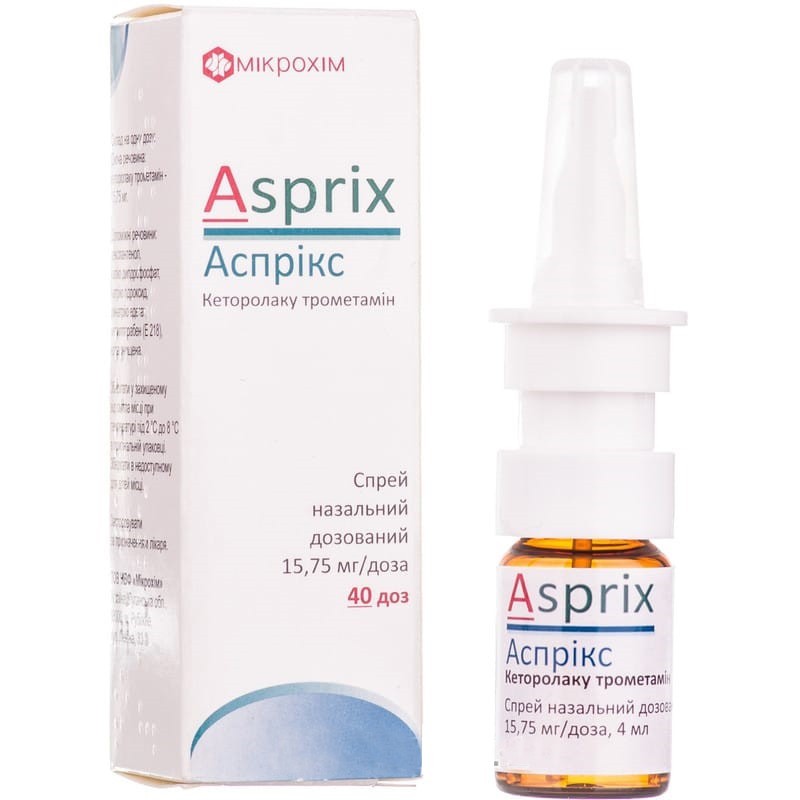



 Secure and encrypted payment processing
Secure and encrypted payment processing We ship to over 40 countries including the USA, UK, Europe, Australia and Japan
We ship to over 40 countries including the USA, UK, Europe, Australia and Japan Guaranteed refund or reship if you haven't received your order
Guaranteed refund or reship if you haven't received your orderAsprix nasal spray is indicated for the short-term treatment of pain of moderate to moderate intensity, which requires analgesia at the opioid level.
Active ingredient: Ketorolac tromethamine;
1 bottle contains ketorolac tromethamine - 0.63 g;
(1 dose contains 15.75 mg of ketorolac tromethamine);
Excipients: dexpanthenol, potassium dihydrogen phosphate, sodium hydroxide, sodium edetate (Trilon B), methyl paraben (methyl parahydroxybenzoate) (E 218), purified water.
The drug is recommended only for short-term use (up to 5 days). In order to minimize side effects, the drug should be used in the minimum effective dose for the short period of time necessary to control symptoms. The drug should not be used concurrently with other forms of ketorolac tromethamine or other NSAIDs.
Contraindicated.
Contraindicated.
The drug does not affect driving and working with mechanisms. But you should consider the possibility of adverse reactions from the nervous system.
Symptoms: headache, nausea, vomiting, epigastric pain, gastrointestinal bleeding, hypertension, hyperventilation of the lungs, respiratory depression rarely - diarrhea, disorientation, agitation, coma, drowsiness, dizziness, tinnitus, loss of consciousness, sometimes cramps. In case of severe poisoning, acute renal failure and liver damage are possible.
Treatment: gastric lavage, intake of activated carbon. Adequate diuresis must be provided. Kidney and liver function should be carefully monitored. As patients should be observed at least 4:00 after taking a potentially toxic dose. Frequent or prolonged cramps should be treated with diazepam. Other measures may be prescribed depending on the clinical condition of the patient.
The development of hypersensitivity reactions, including non-specific allergic reactions and anaphylaxis, respiratory tract reactivity, including asthma, worsening asthma, bronchospasm, swelling of the larynx or shortness of breath, as well as a variety of skin disorders, including rash of various types, itching, urticaria, purpura, have been reported. , angioedema and in rare cases - exfoliative and bullous dermatitis (including epidermal necrolysis and polymorphic erythema).
Ketorolac tromethamine is largely associated with plasma proteins (an average of 99.2%).There is no evidence that ketorolac tromethamine is able to affect the metabolism of other drugs through the induction or inhibition of liver enzymes.
Store at a temperature of 2 ° C to 8 ° C in the original packaging.
Keep out of the reach of children.
Shelf life is 2 years.